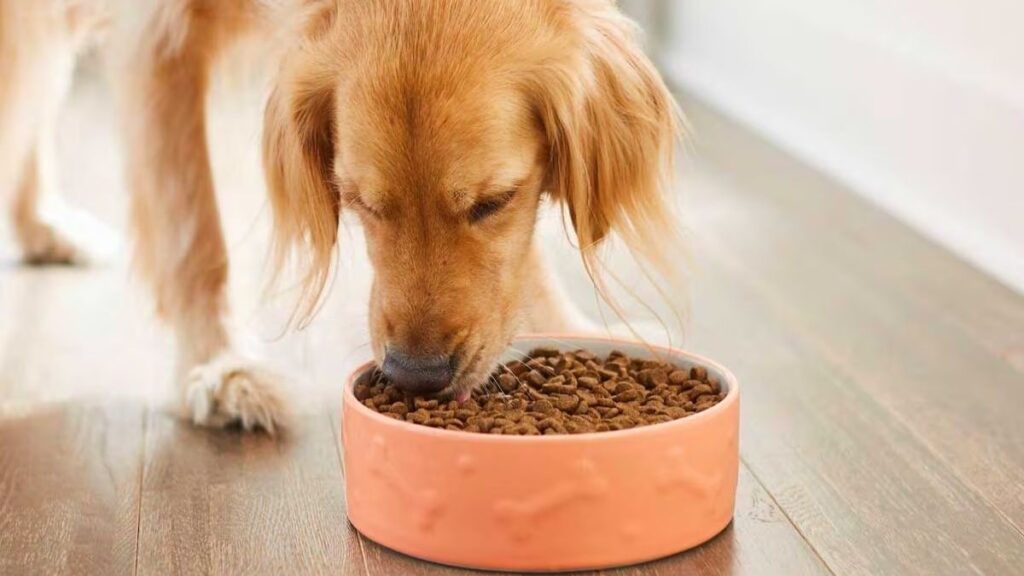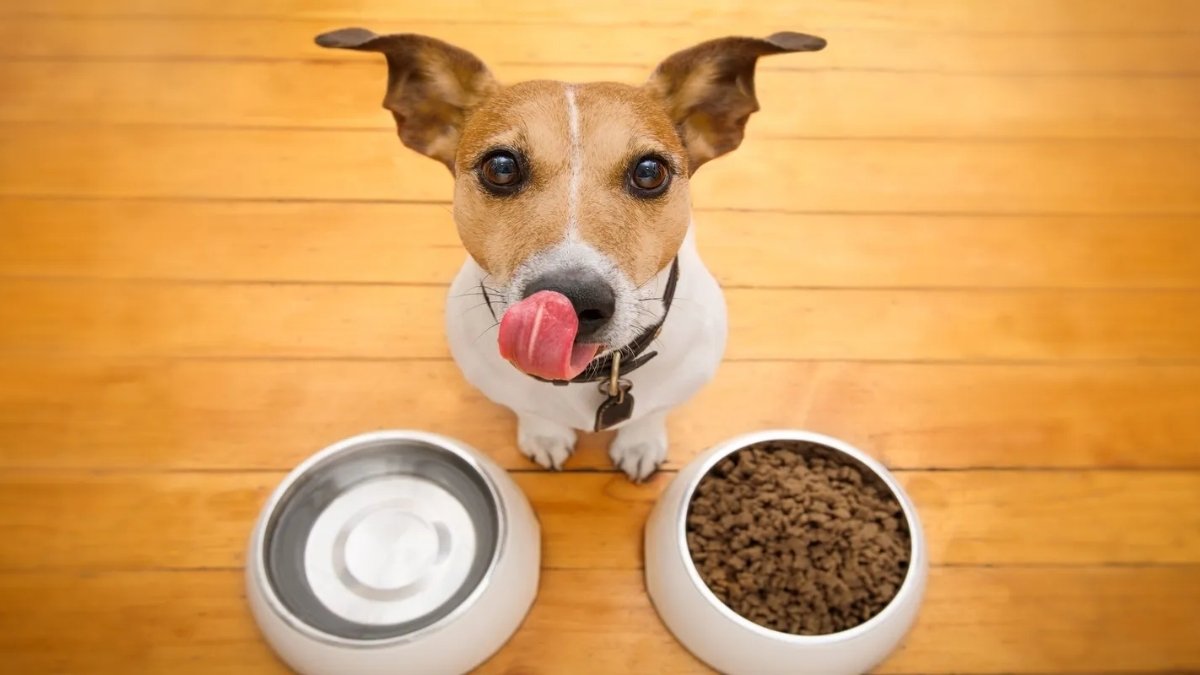How Much to Feed a Dog by Weight (kg); A Detailed Guide
According to the Association for Pet Obesity Prevention, 59% of dogs are overweight or obese, making proper portion control crucial when determining how much to feed a dog by weight (kg). Many pet owners struggle with calculating the right amount of food for their dogs, often overfeeding or underfeeding their pets.
In fact, dogs typically need about 2-4% of their body weight in food daily, with requirements varying based on size and activity level. For instance, a 10-kilogram adult dog requires approximately 400 calories per day, calculated using the Resting Energy Requirement (RER) formula. However, these portions can vary significantly, as dog food calorie content ranges from less than 300 to over 700 calories per cup.
This detailed guide breaks down exactly how much to feed a dog by weight (kg per day), covering everything from basic portion calculations to specific adjustments for different life stages and activity levels. Pet owners will learn precise measurements for various food types and how to maintain their dog’s ideal weight through proper portion control.
Contents
Different Types of Dog Food and Their Portions
Understanding how much to feed a dog by weight (kg) requires mastering portion control across different food types. Initially, pet owners must recognize that dry and wet foods have vastly different calorie densities and serving sizes.
Dry food measurements
Measuring dry kibble accurately proves crucial for determining how much to feed a dog by weight (kg per day). Standard dry dog food contains around 8% moisture, with approximately 370 calories per 100 grams. A standard 8-ounce measuring cup typically holds between 3 to 3.5 ounces of dry food by weight. Furthermore, studies show that using incorrect measuring tools leads to portions ranging from 48% too little to 152% too much.
To ensure accuracy:
- Use a dry-ingredient measuring cup specifically for pet food
- Level the kibble with the cup’s rim
- Consider using a digital kitchen scale for precise measurements
Wet food calculations
Wet dog food contains approximately 75% moisture, making portion calculations distinctly different from dry food. One can of wet food typically provides about 100 calories per 100 grams. Moreover, calculating wet food portions requires dividing the dog’s weight by 15 to determine daily can requirements.
Mixed feeding guidelines
Combining wet and dry food offers multiple benefits while requiring careful portion adjustments. The recommended ratio stands at 75% dry food to 25% wet food by total weight. Additionally, for every half can of wet food added, reduce the dry kibble portion by 1/3 cup.
Primarily, mixed feeding helps increase palatability and moisture intake. Nevertheless, pet owners should note that therapeutic diets should not be mixed with regular foods. Consequently, any dietary changes should occur gradually over seven days to prevent digestive issues.
Understanding how much to feed a dog by weight (kg) becomes simpler through proper measurement techniques and careful attention to food type proportions. Moreover, maintaining consistent portions across different food types ensures optimal nutrition while preventing overfeeding.

How Much to Feed a Dog by Weight (kg) Chart
Precise portion control forms the foundation of healthy feeding habits. Learning how much to feed a dog by weight (kg) requires understanding specific measurements based on size categories.
Small breeds (1-10kg)
Small breed dogs need more calories per kilogram than larger breeds. For dogs weighing 1-5kg, the daily portion ranges from 60-90g (½-¾ cups). Subsequently, dogs between 5-10kg require 90-125g (¾-1 cups) of food per day. Primarily, small breeds consume 3-3.5% of their body weight in food daily.
Medium breeds (11-25kg)
Understanding how much to feed a dog by weight (kg) becomes particularly important for medium breeds. These dogs typically need 2.5-3% of their body weight in food daily. Dogs weighing 11-25kg should receive 125-250g (1-2 cups) of food per day. The daily calorie requirements for a 15kg dog average 472 calories.
Large breeds (26kg+)
Large breed portions require careful monitoring to prevent orthopedic issues. Dogs weighing 26-40kg need 2-2.5% of their body weight in food. The following portion guide applies to large breeds:
- 26-40kg: 4-6 cans or 2-3 cups daily
- 41-60kg: 6-8 cans or 3-3½ cups daily
- 60kg+: 600g+ or 4¾+ cups daily
The calorie requirements increase proportionally with weight – a 50kg dog needs approximately 1,165 calories daily. Notably, portion adjustments become essential based on activity levels and health conditions. Adult large breeds should maintain consistent portions to prevent weight-related health issues.
Lifestyle-Based Portion Adjustments
First and foremost, determining how much to feed a dog by weight (kg) requires careful consideration of their activity level. A dog’s energy needs can vary dramatically based on their lifestyle and daily routines.
Active dogs
Active dogs engaging in regular exercise may need up to twice their normal maintenance energy requirement. In essence, a dog that typically consumes 2 cups daily might require 4 cups during periods of increased activity. These adjustments should occur gradually over several weeks as exercise frequency increases and physical conditioning improves.
Indoor pets
Most modern pets lead sedentary lifestyles, often getting just 20 minutes in the yard or a short walk each day. Given these points, how much to feed a dog by weight (kg per day) should be adjusted downward for indoor pets. Unless a dog walks an average of 2-3 miles daily, they generally fall in the low activity range. As opposed to standard feeding guidelines, indoor pets may need 25-30% fewer calories to maintain a healthy weight.
Working dogs
Working and performance dogs present unique challenges when determining how much to feed a dog by weight (kg). Their energy requirements can increase dramatically based on work type:
- Sprint athletes (racing, coursing) perform best with 40-50% carbohydrates and lower fat content
- Intermediate activity dogs (agility, hunting) need 400-600 calories per cup
- Endurance athletes (sled dogs) may require up to five times their normal caloric intake
Working dogs should not be fed when panting, as this increases bloat risk. Instead, offer multiple small meals throughout the day, especially during long shifts. Most importantly, working dogs need consistent access to fresh water, as they often forget to drink enough during intense activity.
The success of performance dogs depends on matching their nutrient profile to their specific activity type. For optimal results, handlers should measure portions using standard measuring cups and adjust amounts in quarter to half-cup increments every few days based on body condition.
Monitoring Your Dog’s Weight
Regular weight monitoring stands as a fundamental tool in determining how much to feed a dog by weight (kg). Proper tracking helps prevent both underfeeding and overfeeding, ensuring optimal health for canine companions.
Weekly weigh-ins
Understanding how much to feed a dog by weight (kg per day) requires consistent monitoring. Primarily, dogs should be weighed every one to six months for general health tracking. Altogether, puppies need more frequent weigh-ins, specifically every three to four weeks for the first four to six months of life.
For home weighing, pet owners can use bathroom scales by:
- First weighing themselves
- Then holding their dog and weighing again
- Subtracting their weight from the combined total
Certainly, larger dogs might need veterinary scale access, though most clinics offer free weigh-ins between appointments. Basically, using the same scale ensures consistency, as measurements can vary by five to ten pounds between different scales.
Body condition scoring
The Body Condition Score (BCS) system offers a practical approach to determining how much to feed a dog by weight (kg). This scoring method proves more accurate than weight alone in assessing proper feeding amounts. Presently, veterinarians use either a 5-point or 9-point scale, with ideal scores being 2.5-3 or 4-5 respectively.
Studies reveal that 59% of dogs in the United States were overweight in 2022. More concerning still, only 17% of dog owners recognized their pets as overweight. A proper BCS assessment involves examining three key areas:
- Waist visibility from above
- Abdominal tuck from the side
- Rib and bone accessibility through gentle touching
For optimal results, pet owners should assess their dog’s BCS monthly and maintain a diary to track changes. Dogs following weight management programs need more frequent monitoring, typically every one to two weeks. Furthermore, veterinary professionals recommend combining both weight checks and BCS assessments, as this provides more comprehensive information than either measure alone.

Special Dietary Situations
Specific dietary situations demand careful attention to how much to feed a dog by weight (kg), as nutritional needs shift dramatically under certain conditions. Understanding these unique requirements ensures optimal health outcomes for dogs in special circumstances.
Pregnancy and nursing
Prior to breeding, female dogs need proper nutrition to support successful pregnancy and healthy puppies. Indeed, veterinary nutritionists have found that malnourishment before breeding and during pregnancy contributes to a 20-30% puppy mortality rate.
During pregnancy, food intake should increase gradually:
- Weeks 1-6: 10% increase in normal portions
- Weeks 6-9: 15-25% increase in total food intake
- Post-delivery: 2-4 times normal portions during peak lactation
Understanding how much to feed a dog by weight (kg) becomes particularly crucial during nursing, as mothers require the highest energy intake of any life stage. Primarily, nursing dogs need 25% more food per puppy above their regular portion to maintain proper milk production. You can incorporate healthy treats into your dog’s diet.
Weight management
Determining how much to feed a dog by weight (kg per day) requires special consideration for overweight pets. Weight loss programs should focus on caloric restriction while maintaining essential nutrients. Therapeutic weight-loss foods typically feature:
- Lower calorie density
- Higher protein content
- Increased fiber levels
- Enhanced vitamin concentrations
Similarly, calculating proper portions uses the formula: 30 x weight in kg + 70 = daily caloric needs. In addition to this baseline, portions should be adjusted based on progress, with weekly weigh-ins to monitor effectiveness.
Health conditions
Understanding how much to feed a dog by weight (kg) varies significantly when managing specific health issues. It’s common for a sick dog to have no appetite. Dogs with kidney problems, joint pain, arthritis, skin conditions, or digestive issues often require specialized diets. Likewise, senior dogs over seven years old benefit from modified portions featuring:
- Lower calories
- Higher protein levels
- Reduced sodium
- Fewer carbohydrates
- Enhanced omega-3 fatty acids
- Added glucosamine
Simultaneously, dogs with diabetes or other metabolic conditions need precisely timed meals and carefully measured portions. Therefore, any dietary changes should occur gradually over 7-14 days to prevent digestive upset. Most importantly, therapeutic diets should not be mixed with regular foods to maintain their effectiveness.
Frequently Asked Questions about How Much to Feed a Dog by Weight (kg)
What portion size should I feed my dog?
The portion size you should feed your dog depends on their weight, age, activity level, and metabolism. A general guideline is to follow the recommended feeding instructions on the dog food packaging and adjust based on your dog’s energy levels and body condition. If you’re wondering how much to feed a dog by weight (kg per day), most feeding charts provide weight-based recommendations to ensure your pet gets the right nutrition without overfeeding or underfeeding.
How do I know if I’m feeding my dog enough?
You can determine if you’re feeding your dog enough by monitoring their weight, energy levels, and overall health. A well-fed dog should have a visible waistline when viewed from above and a slight tuck in the abdomen. If your dog is losing weight, acting lethargic, or always hungry, you may need to increase their food portions, whereas excessive weight gain may require reducing the amount of food given.
How to calculate dog food portions?
To calculate dog food portions, start by checking the calorie content on the dog food label and comparing it to your dog’s daily caloric needs based on weight and activity level. Divide the total daily calorie requirement into the number of meals you feed per day. For more precise feeding, using a scale to measure kibble or wet food instead of relying on scoops can help ensure your dog gets the right amount of nutrition.
How much food should I feed my dog chart by weight?
A feeding chart by weight can help guide you on the correct portion sizes for your dog. Typically, small breeds require around 40-60 grams per kilogram of body weight, while larger breeds may need 20-30 grams per kilogram. If you’re looking for an accurate guide on how much to feed a dog by weight kg per day, consult a veterinarian or use a reliable online feeding calculator to tailor meals to your dog’s specific needs.
Should I put my dog down if he is still eating?
If your dog is still eating but struggling with a terminal illness or severe pain, it’s essential to assess their overall quality of life. Eating alone is not always an indicator of good health, so consider other factors like mobility, chronic pain, and loss of normal behavior. Consulting a veterinarian can help you determine the best course of action and decide when humane euthanasia may be the kindest choice for your pet.

